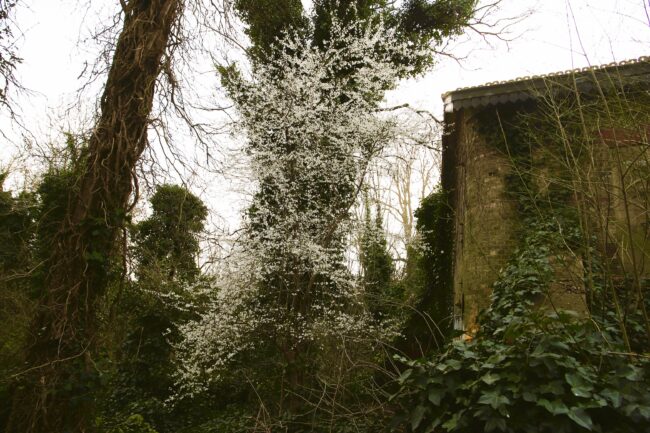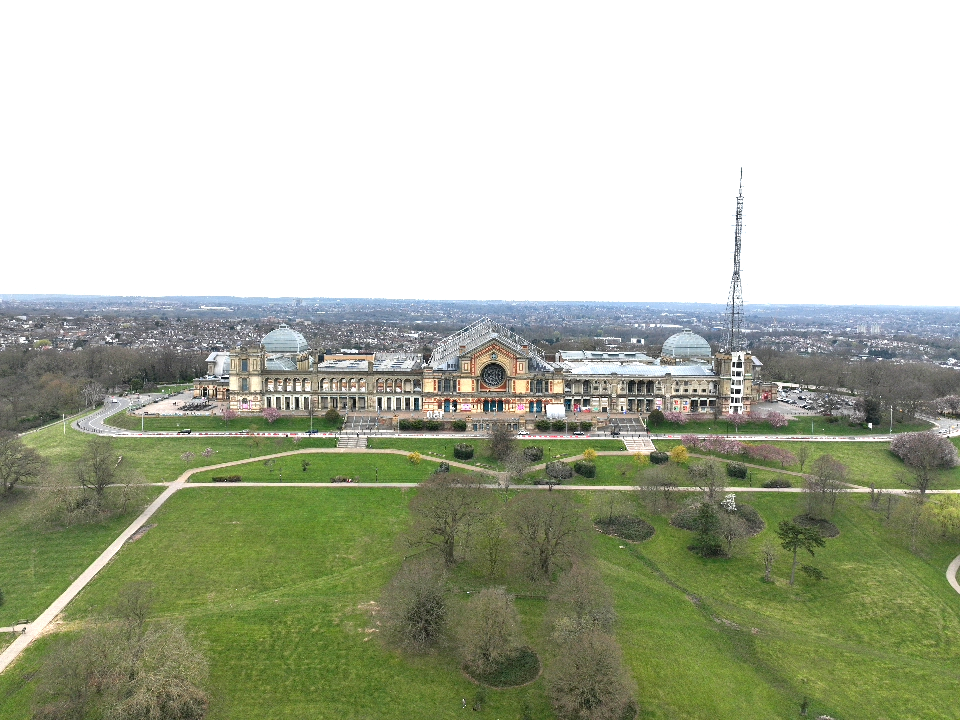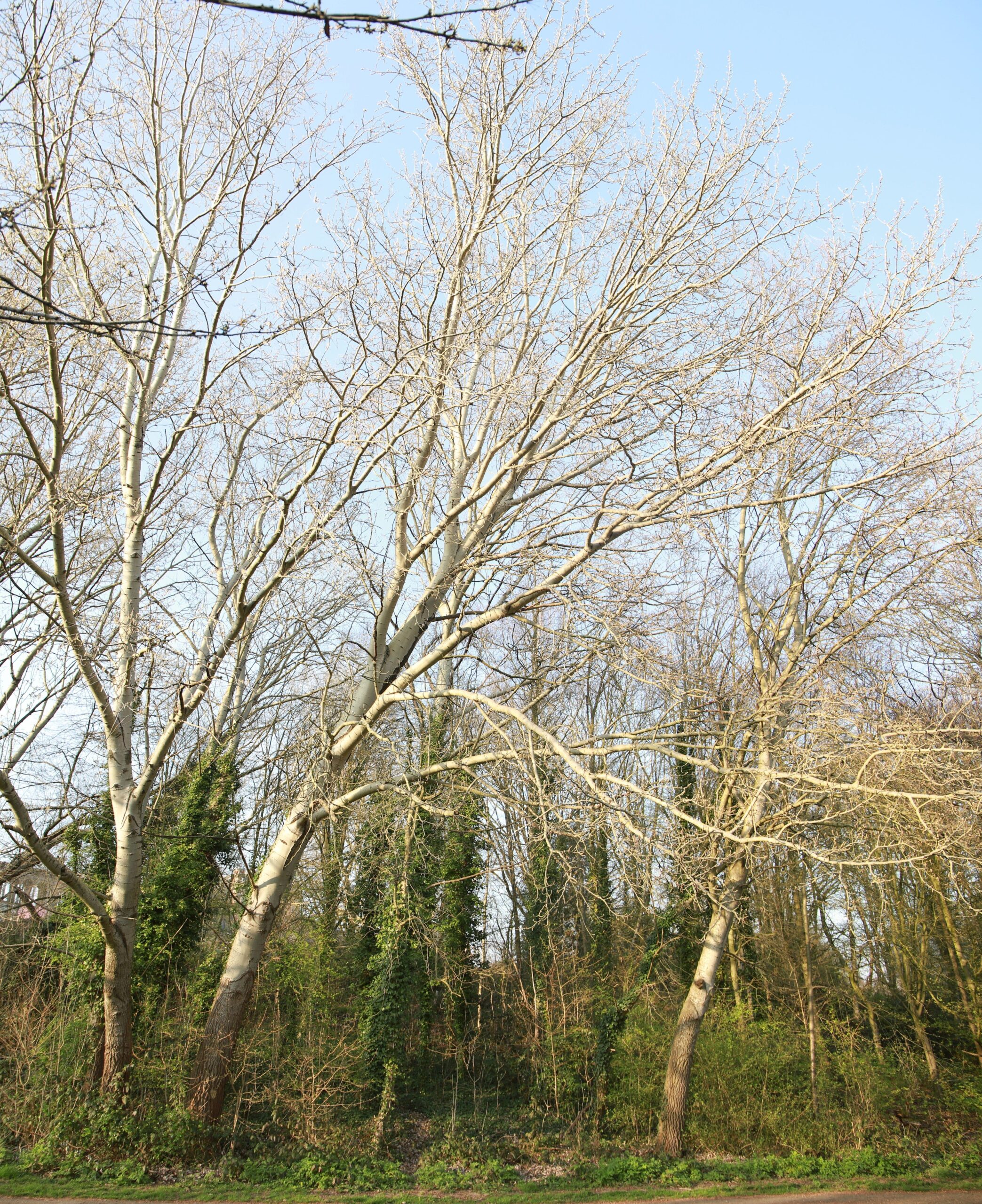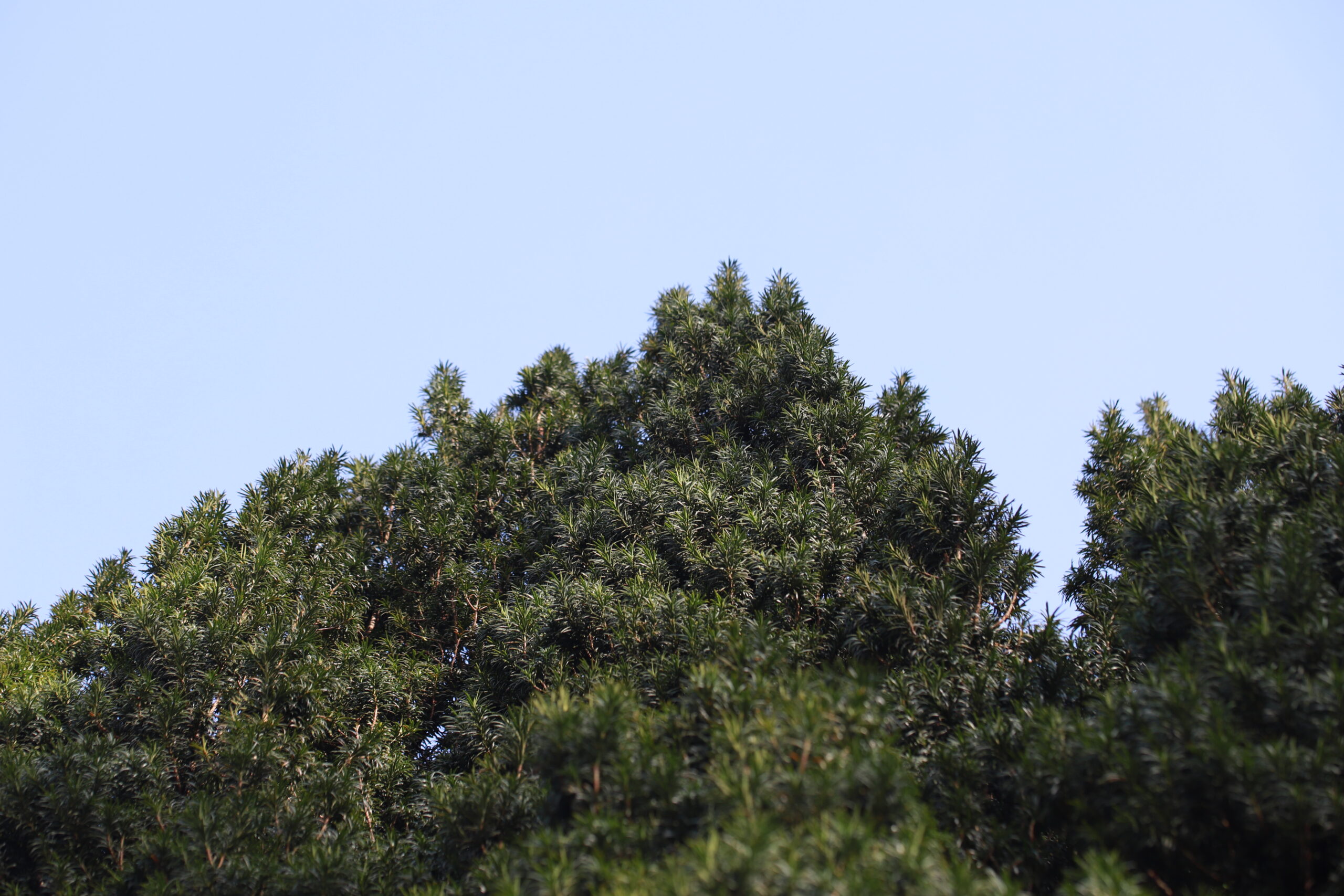There are more than 7,000 trees in Alexandra Park and our resident expert, Stephen Middleton from The Friends of Alexandra Park, is introducing us to them one by one!
Cherry plum blossom in an old tin jug —
Oh, it is lovely, beautiful and fair,
With sun on it and little shadows mixed
All in among the fragrant wonder there.
Cherry plum blossom on the workroom bench
Where we can see it all our working hours.
In all my garden days of ladyhood,
I never met girls who so loved sweet flowers.
“Cherry plum blossom in an old tin jug” a poem by Australian poet Lesbia Harford (1891-1927).
This month’s tree is sometimes deliberately planted, but also freely self-seeds in the park and the wider countryside. Our Tree of the Month is the Myrobalan Plum or Cherry Plum (Prunus cerasifera).
This is the wild version of last February’s Tree of the Month. It has green rather than purple leaves, but the same white cherry-like flowers.
Our particular tree is located behind the “Gas Hut” – the small building on the left as you enter the park from the Bedford Road entrance. The tree stays quite quiet for most of the year before it shouts out its presence in late winter with bright white flowers standing out from the vegetation and building.
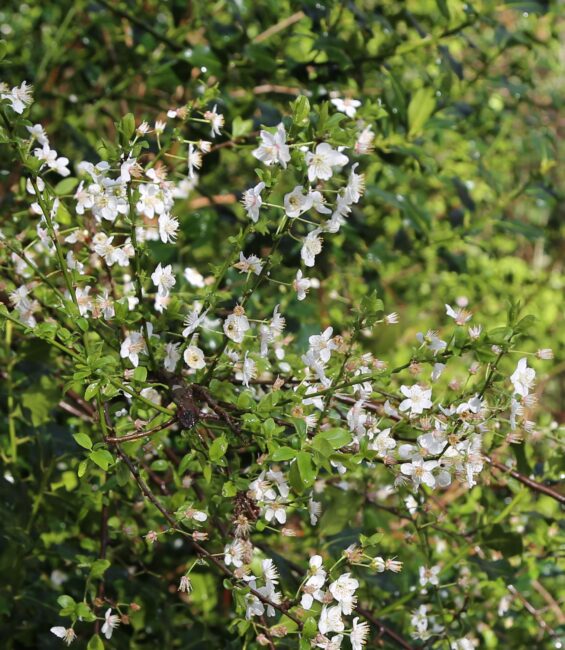
Myrobalan plums can stay as a shrub or grow as a small tree up to 8m to 10m high. The flowers come out just before the leaves. It blooms a little while before the related blackthorn and it can also have sharp spines.
The bark of this tree has some horizontal bands of lenticels (lighter spots which are the tree’s breathing holes), but they are not so pronounced as on a true cherry.
The name myrobalan comes from two Greek words. Myron means plant juice and balanos means nut.
Take the time to inspect the flowers. There are five petals and in the middle of the flower a green patch with just one single stigma – the female part protruding. All around are many of the similar looking male stamens. Behind the petals there are five green sepals – smaller and less flamboyant versions of the petals. In this tree they are reflexed – bent back on themselves which distinguishes the tree from the blackthorn.
The cherry plum is naturalised in the UK after being cultivated from the 1500s. It is not officially native (as it was not present before the land bridge to Europe was flooded about 9,000 years ago).
The cherry plum produces more fruit in its native lands than in this country. In Georgia it is a key ingredient in chakapuli stew and in Romania the fruit is used for giving soups a sour flavour.
If you are near the BBC Tower you can spot another example of this tree in flower on the edge of the car park.
If you are interested in finding out more about the wildlife in the Park check out the wildlife walks (fungi, wildflowers, trees etc.) on the Friends of Alexandra Park website.
